WisDOT Unveils Four Options To Rebuild I-794
Open house draws hundreds, but a decision on preferred alternative is still more than a year away.
On your marks, get set, wait.
A key revelation from Thursday’s open house regarding the replacement of Interstate 794 through downtown Milwaukee was that a final decision on how it will be rebuilt is likely two years away. Actual construction is, at best, five years away.
The extended timeline comes as the project has been expanded to include a full environmental review.
The Wisconsin Department of Transportation, as Urban Milwaukee reported in April, is studying four options to rebuild the aging elevated freeway between the Hoan Bridge and the Milwaukee River.
Two alternatives would rebuild the elevated freeway, but in a much slimmer footprint and with fewer access ramps. The difference between the two is whether the Jackson/Van Buren ramps would be right- or left-sided ramps.
A freeway-to-boulevard reconfiguration is still on the table and would run between the Marquette Interchange and Hoan Bridge.
The fourth option would rebuild the freeway in kind with minimal change.
A preferred alternative is expected to be identified in 2027. Construction, if financing is provided, could begin in 2030.
Hundreds of attendees at Thursday’s meeting were able to ask questions of WisDOT staff and project consultants from HNTB. But plenty of questions remain unresolved and additional study work is necessary.
A second meeting is planned for later this year. Materials from Thursday’s meeting said the upcoming meeting will include data on estimated travel times, details on a movable bridge over the Milwaukee River and traffic flows.
While it isn’t at the point of selecting a preferred alternative, WisDOT is still soliciting feedback on the alternatives. Individuals can review the meeting materials and submit a comment on the project website.
WisDOT has been studying its options since 2022 and first unveiled nine alternatives in 2023.
Details On Alternatives
The slimmer freeway would involve removing or relocating several ramps. The current lakefront offramps, constructed approximately a decade ago, would be simplified, with ramps moved south to an extended E. Buffalo Street. The Milwaukee and Broadway ramp pair would be removed, causing more motorists to use the new lakefront ramps and expanded street grid. The slimmer freeway does not involve modifications west of the Milwaukee River.
The bridges east of the Milwaukee River were not rebuilt as part of the Marquette Interchange project and date to the early 1970s. WisDOT says they are currently safe, but will need to be replaced. The Hoan Bridge was rehabilitated in 2011 and would remain under any of the alternatives under construction.
Under the street-level option, which would involve converting Clybourn Street to a two-way road and building a new movable bridge over the Milwaukee River, a freeway spur would also remain between N. 2nd Street and the Marquette Interchange to the west.
The freeway spur would expedite vehicle access to and from I-43 and I-94 to the south by maintaining a limited-access freeway ramp. Motorists coming or going from I-94 to the west would use the boulevard starting at the Marquette Interchange; much in the same way W. Clybourn Street currently becomes a westbound onramp. The freeway spur would allow the city to maintain The Hop Operations and Maintenance Facility, located underneath the elevated freeway, in its current location.
Both the slimmer freeway and the boulevard would add many acres of developable land. The narrowed freeway would create several new lots between N. Jefferson Street and the lakefront. The boulevard would create a greater number of larger lots and extend west towards N. Water Street. It would also create a developable site along W. St. Paul Avenue where the Plankinton Avenue ramp currently circles. Given its proximity to Downtown and the lakefront, the land is viewed as highly valuable.
According to a WisDOT presentation, the boulevard option is being modeled on the assumption that two-thirds of through traffic would be diverted to other routes. Rethink 794, a coalition formed to advocate for the freeway’s removal, has advocated for improvements to Becher and Bay streets in the Harbor District to improve connectivity between the port and Interstate 43/94. WisDOT estimates that 3% of traffic on the freeway is truck traffic.
“The removal option by WisDOT is not only viable, it would open the door to 30 years of job creation and much-needed housing in the heart of the region,” said the coalition in advance of the meeting. “It would set a national standard for growth within a city center.”
A Rethink 794 report authored by UW-Milwaukee professor emeritus Larry Witzling estimates that the freeway-to-boulevard option would yield $475 million in new property tax revenue, 3,000 new housing units and $60 million in incremental sales tax revenue over 30 years.
Witzling on Thursday said he was pleased with WisDOT’s freeway-to-boulevard design. He told Urban Milwaukee that bringing the freeway to street level at E. Buffalo Street and also extending E. St. Paul Avenue to meet it would provide several options to diffuse traffic through the street grid. Currently, the Hoan Bridge comes to grade at E. Clybourn Street, a block north of E. St. Paul Avenue.
“When the Park East freeway was removed, people thought it would be a traffic nightmare, and now 20 years later, people forget it was even there, and we have a growing Deer District in its place,” said the coalition. “It is becoming clearer that rebuilding an elevated highway through Downtown even with some tweaks completely fails to take advantage of this generational opportunity.”
A project traffic study estimates that 26,600 vehicles make an end-to-end trip across the entire study area each day. More than double that total enters or exits the study area via a ramp and does not make an end-to-end trip, presumably to start or end a trip Downtown.
May 2025 Alternatives
May 2025 Video
If you think stories like this are important, become a member of Urban Milwaukee and help support real, independent journalism. Plus you get some cool added benefits.
More about the Interstate 794 Rebuild
- Real Estate Group Casts Doubt on I-794 Removal Plan - Jeramey Jannene - Nov 11th, 2025
- See How State Thinks Traffic Would Change With I-794 Removal - Jeramey Jannene - Nov 5th, 2025
- Public Meetings Upcoming On Possible I-794 Removal, Replacement - Jeramey Jannene - Oct 17th, 2025
- WisDOT Unveils Four Options To Rebuild I-794 - Jeramey Jannene - May 30th, 2025
- Open House Scheduled On Revised Plans To Replace I-794 - Jeramey Jannene - May 9th, 2025
- UWM Students Design A Future Without I-794 - Jeramey Jannene - May 2nd, 2025
- See New Options To Slim I-794 in Downtown or Make It A Boulevard - Jeramey Jannene - Apr 2nd, 2025
- Freeway-to-Boulevard Option Still On Table for 794 Rebuild - Jeramey Jannene - Jan 30th, 2025
- Converting 794 To Boulevard Could Yield 3,000 Housing Units, $1.1 Billion in Development - Jeramey Jannene - Nov 21st, 2024
- See What Boulevard Replacing I-794 in Downtown Would Look Like - Jeramey Jannene - Jul 30th, 2024
Read more about Interstate 794 Rebuild here
Transportation
-
MCTS Finalizes New Route Changes
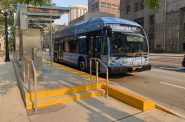 May 28th, 2025 by Graham Kilmer
May 28th, 2025 by Graham Kilmer
-
Negotiations Break Down Between MCTS, Union
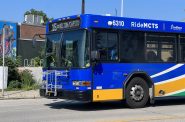 May 23rd, 2025 by Graham Kilmer
May 23rd, 2025 by Graham Kilmer
-
Third Ward Noise ‘Getting Really Bad’
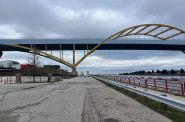 May 12th, 2025 by Jeramey Jannene
May 12th, 2025 by Jeramey Jannene


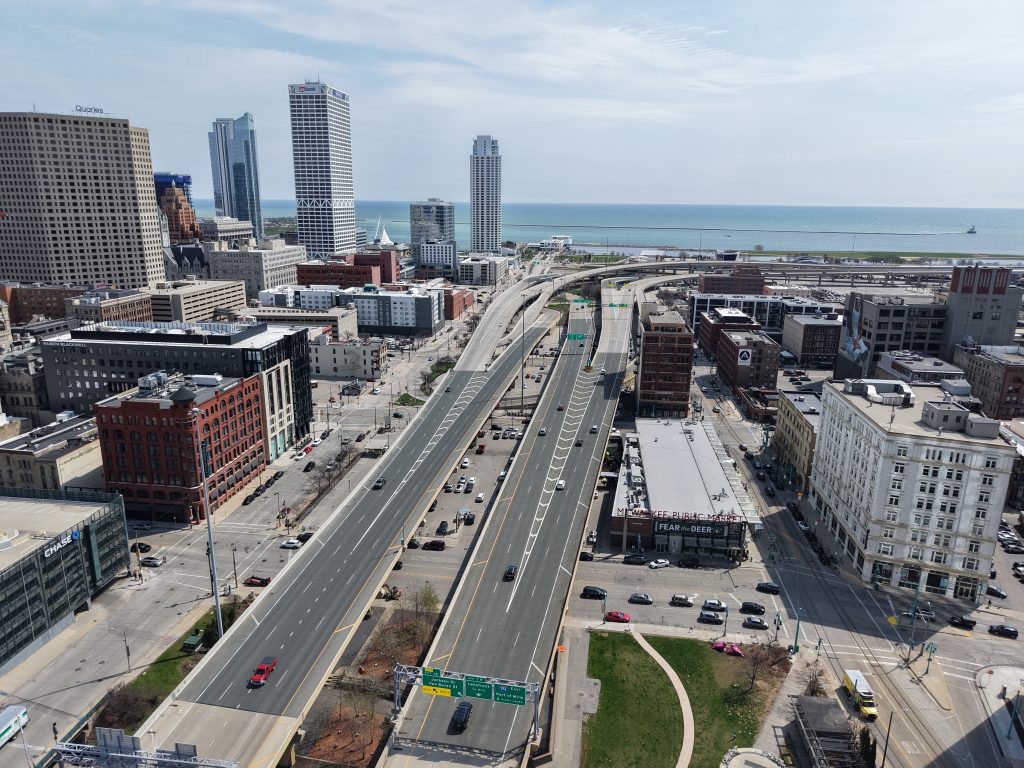








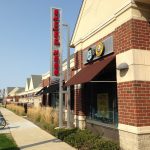
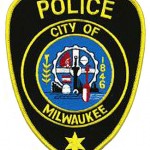
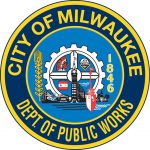







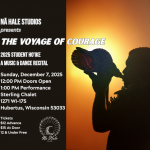



…”estimates that the freeway-to-boulevard option would yield $475 million in new property tax revenue, 3,000 new housing units and $60 million in incremental sales tax revenue over 30 years.” …… if there was this much pent up demand, why hasn’t any of this already been built on any of the numerous vacant parcels in the immediate vicinity?
Why is the majority of the Park East still vacant? Witzling himself says… it’s been 20 years.
If Witzling knows where that secret list of “developers with billions of dollars begging to find a vacant lot in downtown Milwaukee” … why doesn’t he call them now, and ask them to build on any of the surface parking lots downtown.
Jeramey – for your next insiders event – take 10 readers over to the 6th and Mckinley and go for a peaceful stroll from there to the River. Then write an article including everyone’s feedback on how beautiful and safe and friendly their stroll along the boulevard was. Be sure you all cross Mckinly 2 or 3 times at each intersection, so you truly soak up how safe and convenient and pedestrian friendly and inviting the experience is…
and be sure to post pictures of all the quaint sidewalk cafes, and the mom & pop business’es that have taken over the area.
Why Milwaukee caves to Witzling’s wishes is not surprising. Knocking down that stretch probably will bring a few businesses to the area, and where does Witzling come up with the $475 million dollar number.
Let’s have a referendum on this project. Keep in mind it was Tom Barrett who’s responsible for the Hop and how is that working out for the city? A perfectly good stretch of freeway that is used for commerce is going to be reimagined on the whim of one person is a misguided.
The Deer District is the western portion of the Park East Freeway. Development there is booming adding tax revenues to the city and state coffers. While there still remains several sections available for development, removing the Park East has been a boom to Milwaukee.
Freeways take an inordinate among of land out of development. Both the Park East and I794 east of the Marquette interchange do not (and did not) see traffic use to justify keeping so much land out of development. As for the Hop, all you need do in examine the amount of development all its route to see its value. Expanding the Hop is essential for growth throughout the city. I believe the most valuable expansions routes should be north to Capitol Drive (at least) and south to the airport. So too, expanding the RBT the 27th Street routes makes perfect sense. Other routes could include 16th St., 35th St., Hawley Road, 76th Street, McKinley/Fond du Lac Ave., Van Buren/Holton Sts., and others. RBT could be the catalyst to a regional transit system.
What too many people fail to see is how rapid public transportation generates development. We only need look at what other major cities are building–public transportation for everyone. Here in Milwaukee, we are still stuck with a public transportation only for the poor, and even that doesn’t meet needs. Our narrow perspective keeps the city and the state trapped in the past; hindering economic development that would serve not just Milwaukee but the entire state. The age of the car is waning. Time to come into the 21st century.
The discussion should draw on the significant shift in thinking about traffic engineering over the past few years. Wes Marshall, a professional engineer (PE) and professor of Civil Engineering, in his book, Killed by a Traffic Engineer: Shattering the Delusion that Science Underlies Our Transportation System (2024), reveals many areas of unfounded assumptions, faulty logic, poor research methods, and spurious reasoning that have been made about traffic flow. Charles Marohn, also a professional engineer (PE), in his book Confessions of a Recovering Engineer: Transportation for a Strong Town (2021), boldly calls for reforming the engineering profession and overturning its insular rejection of alternatives. Susan Handy, in Shifting Gears: Toward a New Way of Thinking about Transportation (2023), synthesized multiple threads of research, history, and practices to illustrate the shifts occurring in assumptions about core ideas in transportation engineering. Megan Kimble, in her book, City Limits: Infrastructure, Inequality, and the Future of America’s Highways (2024) reveals the ideological basis of highway construction in cities. Some of these books’ publication dates have occurred after the start of this freeway study, but all shed crucial insight into how we can move forward with this project.
Numerous cases of urban freeway removal–even from an earthquake in San Francisco or the West Side highway collapse in NYC–have improved cities. These examples are extensive in the literature, and former Milwaukee Planning Director Peter Park, in a 2023 presentation in Milwaukee, emphasized this point by asking for any example where removing an urban freeway made a city worse off, as he said he found none. The underlying principle is what Todd Litman describes in “Generated Traffic and Induced Travel: Implications for Transport Planning” (Victoria Transport Policy Institute). Induced traffic occurs when automobile travel capacity is increased (such as expanding a freeway) — and cars flow in like a gas filling a space. Removing this capacity appears to cause the opposite effect: motorists take alternate pathways. After freeway spurs are gone, the most striking statements come from the prior opponents of freeway removal, who often express baffled surprise that their fears, once so strong, were unfounded.
Time and time again, opponents of freeway removal have cried wolf and used terms like “carmageddon,” “disaster,” and accusations of “crazy” for those in favor of freeway removal. The fear is that, once the freeway spur is gone, automobile drivers will mindlessly motor on the same path and clog the remaining streets out of a blind urge to follow a non-existent freeway. The design of McKinley Boulevard in Milwaukee highlights how excess capacity engineered into surface streets, applying the same assumptions to build overcapacity on the ground versus in the air yields corresponding results. Many traffic modeling assumptions and planning diagrams make this same mistake–the illogical assumption that a changed road and street network will result in motorists attempting the same travel patterns–and this is an indefensible assumption.